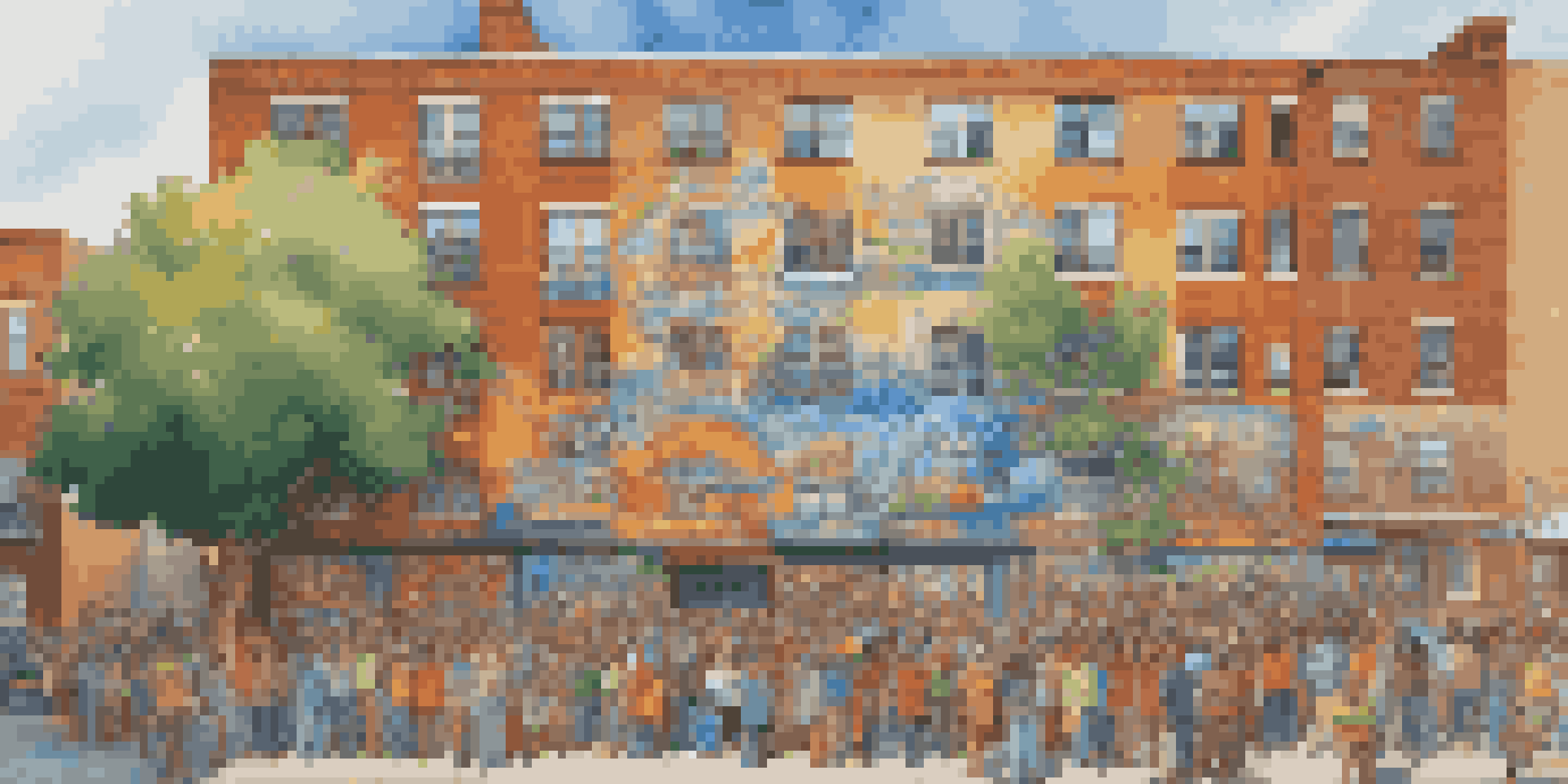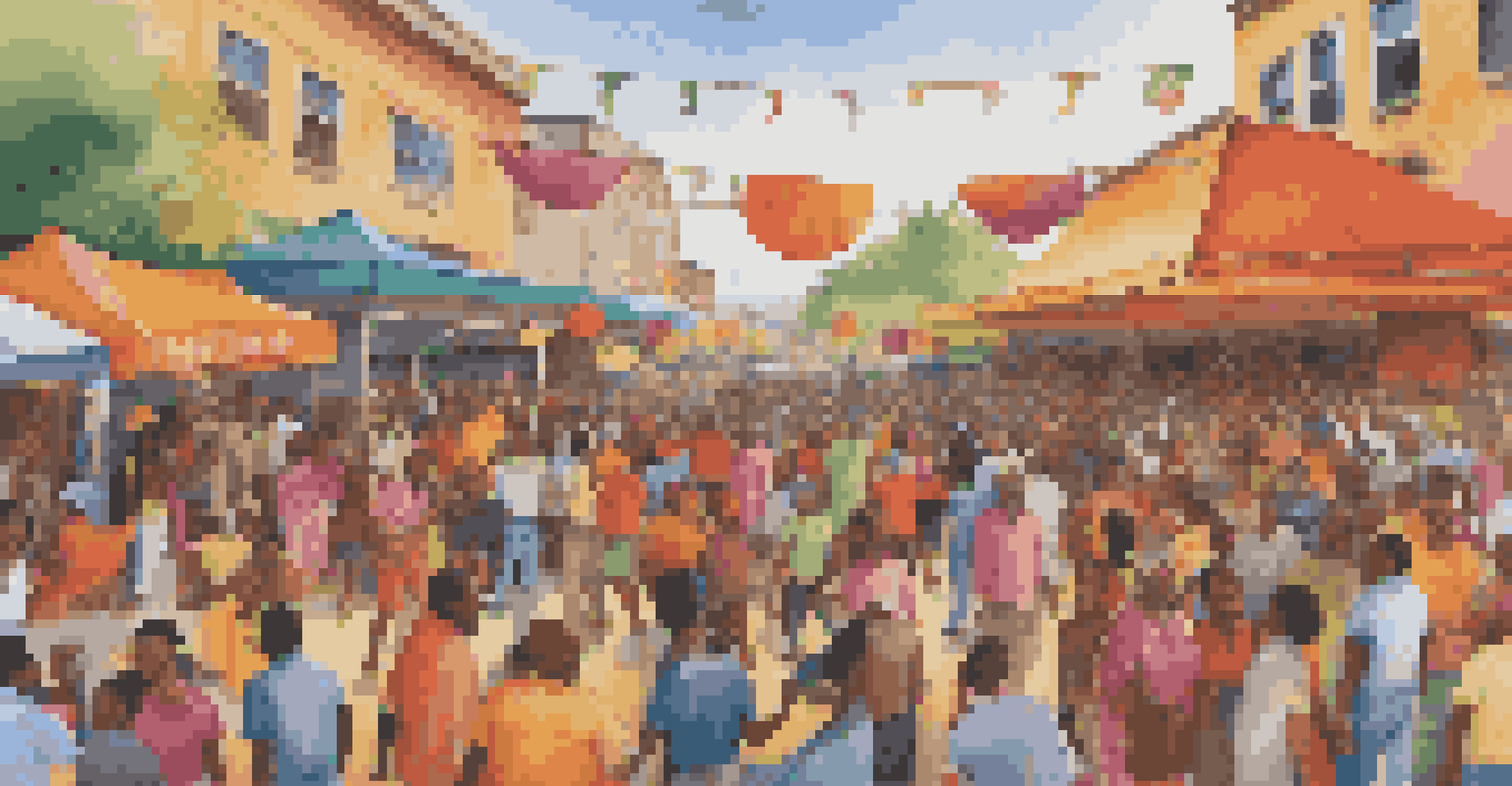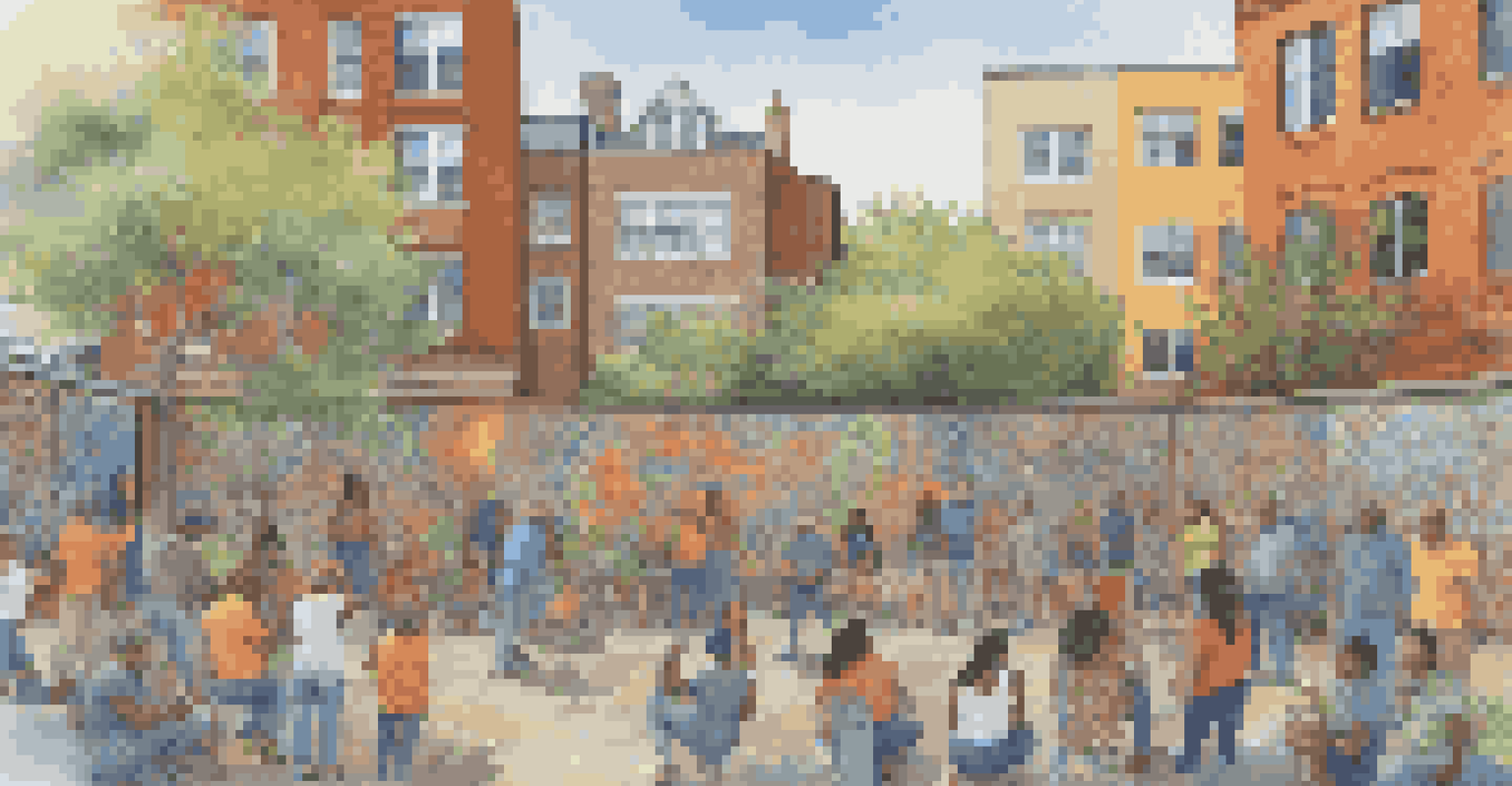The Impact of Community Murals on Local Activism

What Are Community Murals and Their Purpose?
Community murals are large-scale artworks created in public spaces, often reflecting the culture and values of the local area. They serve as a vibrant expression of community identity and pride, capturing the stories and experiences of residents. These murals can also address social issues, making them powerful tools for advocacy and awareness.
Art is not what you see, but what you make others see.
By transforming blank walls into canvases of creativity, community murals not only beautify neighborhoods but also invite dialogue about important topics. Artists often collaborate with local residents to ensure the murals resonate with the community's voice. This collaborative aspect fosters a sense of ownership and belonging among the people who live there.
Ultimately, community murals are more than just art; they represent a collective vision for the future, encouraging unity and action within the community. When people see their stories reflected in public art, they may feel inspired to take part in local activism and advocate for change.
The Role of Murals in Raising Social Awareness
Murals can serve as a powerful medium for raising awareness about social issues such as racism, inequality, and environmental concerns. For instance, a mural depicting the struggles of marginalized communities can spark conversations and encourage people to engage with those issues in meaningful ways. This visual storytelling can make complex issues more relatable and urgent.

Furthermore, murals often attract attention from media and social platforms, amplifying the message beyond the local community. The visual impact of a mural can create a ripple effect, encouraging discussions that might not have occurred otherwise. People who pass by these artworks may feel compelled to learn more and participate in related activism.
Murals Reflect Community Identity
Community murals serve as vibrant expressions of local culture and values, fostering a sense of pride and belonging among residents.
By bringing these issues to the forefront, community murals not only educate but also mobilize people to take action. They can inspire a sense of urgency and responsibility among community members, motivating them to stand up for social justice and contribute to positive change.
Creating a Sense of Belonging Through Art
One of the most significant impacts of community murals is their ability to foster a sense of belonging. When residents see their culture and experiences represented in public art, it can help them feel connected to their community. This sense of belonging is crucial, especially in diverse neighborhoods where individuals may feel isolated or marginalized.
The role of the artist is to make the revolution irresistible.
Murals often depict local heroes, historical events, or cultural traditions, creating a shared narrative that unites community members. This shared identity can lead to stronger social ties and a greater willingness to support one another. When people feel a part of something bigger, they are more likely to engage in activism and community initiatives.
Moreover, the act of creating these murals can itself strengthen community bonds. Residents who participate in the mural-making process often form new friendships and connections, reinforcing the idea that they are working towards a common goal. This collaborative spirit can be a catalyst for further activism and community engagement.
Murals as Catalysts for Community Events
Community murals often serve as focal points for gatherings and events, helping to bring people together. For example, a newly unveiled mural can attract crowds for a celebration, where residents can connect, share stories, and discuss local issues. These events help solidify the mural’s significance and encourage ongoing community dialogue.
Additionally, murals can inspire other community projects, such as festivals, workshops, or clean-up days, that further enhance local engagement. When people come together to celebrate their shared space, they are more likely to develop a sense of pride and responsibility for their community. This pride can translate into action, encouraging participation in various activism efforts.
Art as a Tool for Social Change
Murals can raise awareness about social issues, inspiring community dialogue and mobilizing residents to engage in activism.
As these events unfold, they create a cycle of engagement where community members feel empowered to take ownership of their neighborhood. The mural becomes a symbol of unity and collective action, reminding residents that they can work together to effect change.
The Economic Impact of Community Murals
Community murals can also contribute to the local economy by attracting tourism and increasing foot traffic. A vibrant mural can draw visitors looking for unique photo opportunities, which can benefit local businesses. This influx of visitors can lead to increased sales for nearby shops and restaurants, creating a win-win situation for the community.
Moreover, murals can play a role in revitalizing neighborhoods that may be struggling economically. By enhancing the visual appeal of an area, they can help change perceptions and encourage investment. This, in turn, can lead to further community development and improvements.
As local economies grow, so does the potential for community activism. Residents who benefit from economic growth may feel more motivated to give back, supporting local initiatives and projects that promote social change.
Engaging Local Artists in Community Initiatives
Involving local artists in the creation of community murals is a key factor in their success. When artists from within the community create the artwork, it ensures that the mural reflects the true essence of the neighborhood. This engagement not only showcases local talent but also strengthens the connection between the artists and the residents.
Moreover, local artists often have a deeper understanding of the community's struggles and aspirations, allowing them to create more impactful and relevant works. Their involvement can also inspire younger generations to explore their own artistic talents and consider activism through art.
Local Artists Empower Communities
Engaging local artists in mural projects not only showcases their talent but also strengthens the connection between art and community activism.
By nurturing local artists, communities can cultivate a vibrant cultural scene that encourages ongoing artistic expression and activism. This relationship between art and community can become a powerful engine for change, as more individuals feel empowered to share their stories and advocate for their beliefs.
Challenges and Considerations in Mural Projects
While community murals have many benefits, there are also challenges to consider. Issues such as funding, vandalism, and differing opinions on themes can create obstacles for mural projects. Securing financial support from local businesses or grants can be difficult, which may limit the scope of potential projects.
Additionally, it's crucial to ensure that the murals represent the community's diverse voices and values. Sometimes, conflicts can arise when certain groups feel excluded from the mural's theme or design. Open dialogue and collaboration are essential in addressing these concerns and ensuring that the final artwork resonates with everyone.

Despite these challenges, the potential impact of community murals on local activism makes overcoming these obstacles worthwhile. By fostering inclusivity and collaboration, communities can create murals that truly reflect their unique identities and inspire action for positive change.